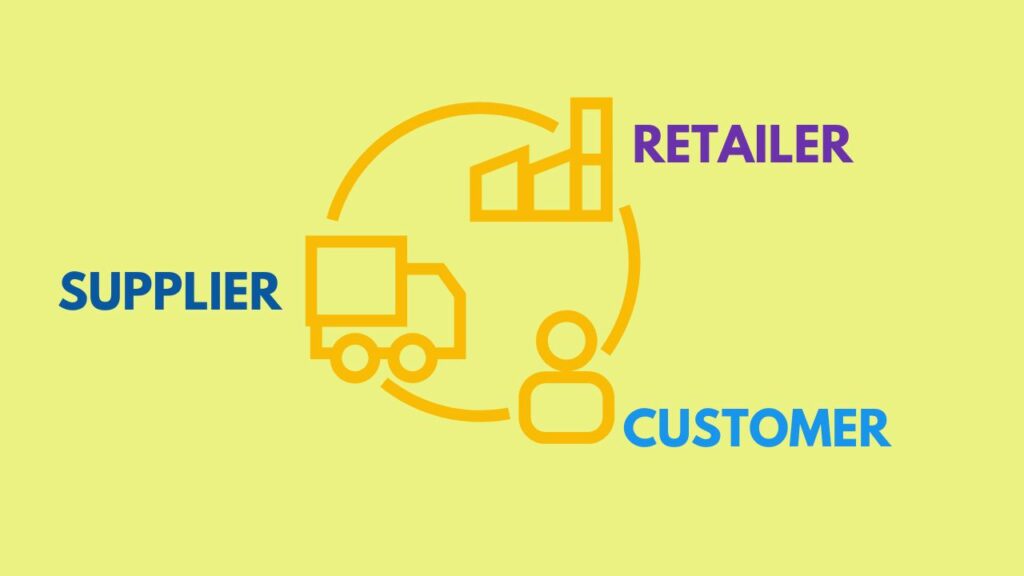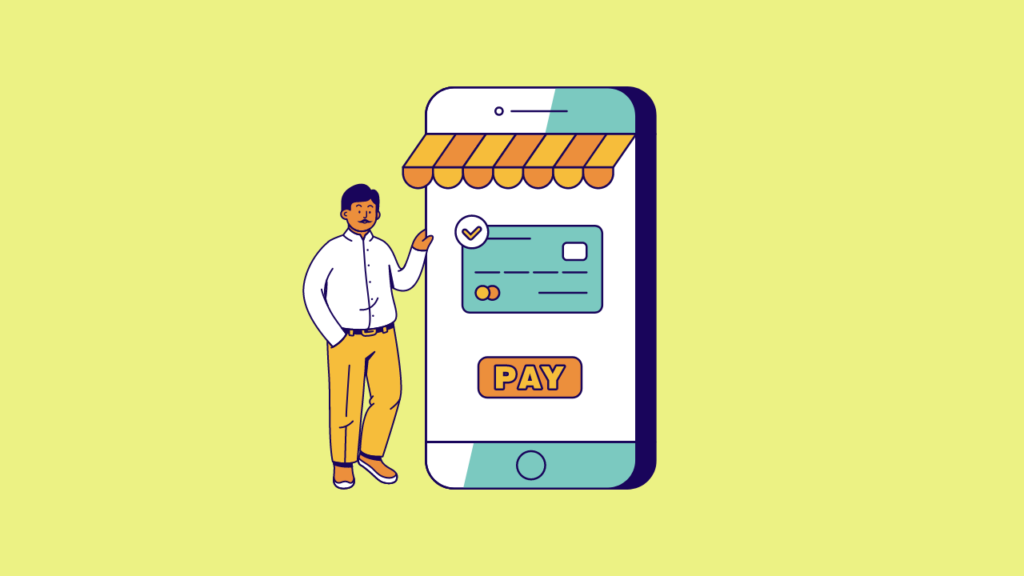As an eCommerce veteran with a decade of experience under my belt, I have witnessed the ever-evolving landscape of online businesses.
One question that frequently arises is:
Which type of eCommerce is the most profitable?
While profitability can vary based on numerous factors, certain eCommerce models have consistently demonstrated their potential for higher returns.
This article covers:
1. Business-to-Consumer (B2C) eCommerce
Tapping into Mass Consumer Markets
The B2C eCommerce model, which involves selling directly to end consumers, has long been a dominant force in the online retail space. This model caters to a vast and diverse consumer base, offering a wide range of products and services that fulfill everyday needs, from fashion and electronics to household goods and personal care items.
One of the key advantages of B2C eCommerce is its ability to tap into mass consumer markets. With the proliferation of online shopping and the growing comfort of consumers with digital transactions, businesses operating in this space have access to a massive pool of potential customers. This reach is further amplified by the global nature of the internet, allowing B2C eCommerce platforms to transcend geographical boundaries and expand their customer base worldwide.
![opular B2C eCommerce platforms like Amazon, Walmart, and Target]](https://www.apguides.com/wp-content/uploads/2024/03/Ecommerce-Post-Images-1-1-1024x576.jpg)
Scalability and Growth Potential
Another significant advantage of B2C eCommerce is its inherent scalability. With the right strategies and resources, businesses can rapidly expand their reach, target new customer segments, and capitalize on emerging trends, fueling rapid growth and profitability. This scalability is facilitated by the digital nature of eCommerce, which allows for seamless integration of marketing campaigns, inventory management, and order fulfillment processes.
Furthermore, the B2C eCommerce model often benefits from economies of scale, where larger businesses can leverage their size to negotiate better pricing from suppliers, optimize logistics and shipping processes, and invest in advanced technologies to streamline operations and enhance the customer experience.
2. Business-to-Business (B2B) eCommerce
Serving Niche and Specialized Markets
While B2C eCommerce targets mass consumer markets, B2B eCommerce focuses on serving businesses and organizations with specialized needs. This model often involves selling products or services that cater to specific industries, trade professionals, or enterprise-level clients. Examples include industrial equipment, raw materials, office supplies, and specialized software solutions.
The B2B eCommerce market has experienced significant growth in recent years, driven by the increasing digitalization of business operations and the need for efficient procurement processes. By leveraging online platforms and marketplaces, B2B businesses can streamline their supply chain, reduce costs, and improve operational efficiencies.
High-Value Transactions and Recurring Revenue
One of the key advantages of B2B eCommerce is the potential for high-value transactions. Unlike B2C eCommerce, where individual purchases may be relatively small, B2B transactions often involve larger orders, bulk purchases, or complex product configurations. This translates into higher revenue per transaction, which can significantly impact profitability.
Additionally, many B2B businesses operate on a recurring revenue model, providing ongoing services, supplies, or subscriptions to their clients. This model ensures a steady stream of income and allows for better forecasting and resource allocation, further contributing to profitability.
3. Dropshipping eCommerce
Low Overhead and Inventory Costs
Dropshipping has emerged as a highly profitable eCommerce model, particularly for entrepreneurs and small businesses. In this model, the retailer acts as an intermediary, facilitating sales without maintaining physical inventory. Instead, the products are sourced directly from the manufacturer or wholesaler, who handles the shipping and fulfillment processes.
The dropshipping model offers significant advantages in terms of low overhead and inventory costs. By eliminating the need for warehousing and inventory management, businesses can operate with minimal upfront investment and reduced operational expenses. This low-cost structure translates into higher profit margins, making dropshipping an attractive option for those looking to enter the eCommerce space with limited resources.

Flexibility and Scalability
Another key advantage of dropshipping is its inherent flexibility and scalability. Dropshipping businesses can quickly adapt to changing market demands by adding or removing products from their online catalogs without the risks associated with holding physical inventory. This agility allows businesses to capitalize on emerging trends, test new product lines, and pivot their offerings based on customer preferences.
Moreover, the lack of inventory management requirements and the ability to leverage third-party logistics providers make it easier for dropshipping businesses to scale up or down based on demand. This scalability is particularly valuable in the dynamic eCommerce landscape, where consumer trends can shift rapidly, and the ability to respond quickly can be a competitive advantage.
4. Subscription-Based eCommerce
Recurring Revenue and Customer Loyalty
Subscription-based eCommerce models, such as subscription boxes or membership programs, have gained significant traction in the last decade. These businesses offer recurring deliveries of products or services, providing customers with convenience, value, and a curated experience tailored to their interests or needs.
| Subscription Type | Example |
|---|---|
| Beauty/Grooming | Birchbox, Dollar Shave Club, Ipsy |
| Food/Beverages | Blue Apron, Winc, SnackNation |
| Entertainment | Netflix, Spotify, Amazon Prime |
| Fitness/Wellness | Peloton, ClassPass, Yoga International |
The subscription model offers several advantages in terms of profitability. First and foremost, it ensures a steady stream of recurring revenue, allowing businesses to forecast cash flows more accurately and plan for growth and investment. This predictable revenue stream can be particularly valuable in times of economic uncertainty or market volatility.
Additionally, subscription-based businesses often foster strong customer loyalty and retention. By delivering a consistent and personalized experience, these businesses can reduce churn rates and increase customer lifetime value, further contributing to their profitability.
Data-Driven Personalization and Targeted Marketing
One of the key drivers of success for subscription-based eCommerce businesses is their ability to leverage data and customer insights. By analyzing customer preferences, purchase patterns, and behavior, these businesses can tailor their product offerings, curate personalized experiences, and develop targeted marketing campaigns that resonate with their audience.
This data-driven approach not only enhances customer satisfaction and loyalty but also provides a competitive advantage by enabling businesses to anticipate and meet evolving customer needs more effectively. By continuously refining their offerings and optimizing their operations based on data-driven insights, subscription-based eCommerce businesses can maintain a strong value proposition and drive long-term profitability.
5. Mobile eCommerce (m-Commerce)
As mobile devices have become an integral part of our daily lives, the rise of mobile eCommerce (m-Commerce) has opened up new avenues for profitability. M-commerce refers to the buying and selling of goods and services through mobile apps or mobile-optimized websites.
Convenience and Accessibility
One of the primary advantages of m-Commerce is its unparalleled convenience and accessibility. Consumers can browse and make purchases anytime, anywhere, without being tethered to a desktop computer or physical location. This level of convenience has driven significant consumer adoption, with mobile devices accounting for a growing share of eCommerce transactions.

Targeted Marketing and Personalization
Mobile devices offer a wealth of data and insights into consumer behavior, location, and preferences. By leveraging this data, m-Commerce businesses can deliver highly targeted and personalized marketing campaigns, product recommendations, and promotional offers. This level of personalization can significantly enhance the customer experience, driving engagement, loyalty, and ultimately, profitability.
Integration with Emerging Technologies
M-Commerce also opens the door to integrating with emerging technologies, such as augmented reality (AR) and virtual reality (VR). These technologies can revolutionize the shopping experience by allowing customers to virtually try on products, visualize furniture or home decor in their own spaces, and interact with products in innovative ways. By embracing these technologies, M-Commerce businesses can differentiate themselves, enhance customer engagement, and potentially drive higher conversion rates and profitability.
The Importance of Adaptability and Diversification
While each of the eCommerce types discussed above offers unique advantages and potential for profitability, it’s important to note that the eCommerce landscape is constantly evolving. Consumer preferences, market trends, and technological advancements can quickly shift the playing field, creating new opportunities and challenges.
Successful eCommerce businesses must remain adaptable and open to diversifying their strategies. By embracing a multi-channel approach, combining various eCommerce models, and continually innovating, businesses can mitigate risks, capitalize on emerging trends, and maintain a competitive edge in the dynamic world of eCommerce.
Moreover, profitability in eCommerce is not solely determined by the chosen model but also by factors such as operational efficiency, customer service, marketing strategies, and the ability to continuously optimize and refine the business model based on data-driven insights.
Conclusion
While each eCommerce type presents its own advantages and potential for profitability, the key to long-term success lies in understanding the unique strengths and nuances of each model, adapting to changing market conditions, and continuously innovating to meet evolving customer needs and preferences.
Latest Posts
- 10 Benefits of Passive Income Streams
- 10 Best Practices to Prevent Ecommerce Scams
- 10 Effective Advertising Campaign Strategies: Tried-and-True Examples
- 10 Effective Marketing Strategies
- 10 Effective Motivation And Self-help Strategies For Managing Stress And Anxiety
- 10 Proven Steps for Launching Your Online Store Successfully










